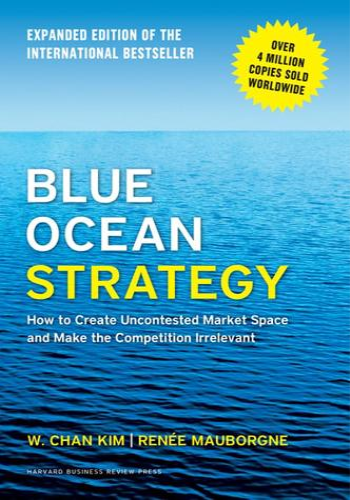OVER 4 MILLION COPIES SOLD
WALL STREET JOURNAL AND BUSINESSWEEK BESTSELLER
RECOGNIZED AS ONE OF THE MOST ICONIC AND IMPACTFUL STRATEGY BOOKS EVER WRITTEN
The global phenomenon that has sold over 4 million copies, is published in a record-breaking 49 languages and is a bestseller across five continents-now updated and expanded with new content. Named by Fast Company as one of the most influential leadership books in its Leadership Hall of Fame. A strategy classic.
In this perennial bestseller, embraced by organizations and industries worldwide, globally preeminent management thinkers W. Chan Kim and Renée Mauborgne challenge everything you thought you knew about the requirements for strategic success. Recognized as one of the most iconic and impactful strategy books ever written, BLUE OCEAN STRATEGY, now updated with fresh content from the authors, argues that cutthroat competition results in nothing but a bloody red ocean of rivals fighting over a shrinking profit pool. Based on a study of 150 strategic moves (spanning more than 100 years across 30 industries), the authors argue that lasting success comes not from battling competitors but from creating "blue oceans"-untapped new market spaces ripe for growth.
BLUE OCEAN STRATEGY presents a systematic approach to making the competition irrelevant and outlines principles and tools any organization can use to create and capture their own blue oceans. This expanded edition includes:
- A new preface by the authors: Help! My Ocean Is Turning Red
- Updates on all cases and examples in the book, bringing their stories up to the present time
- Two new chapters and an expanded third one-Alignment, Renewal, and Red Ocean Traps-that address the most pressing questions readers have asked over the past 10 years
A landmark work that upends traditional thinking about strategy, this bestselling book charts a bold new path to winning the future. Consider this your guide to creating uncontested market space-and making the competition irrelevant.
To learn more about the power of BLUE OCEAN STRATEGY, visit blueoceanstrategy.com. There you'll find all the resources you need-from ideas in practice and cases from government and private industry, to teaching materials, mobile apps, real-time updates, and tips and tools to help you make your blue ocean journey a success.






